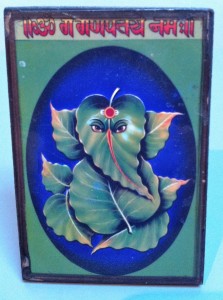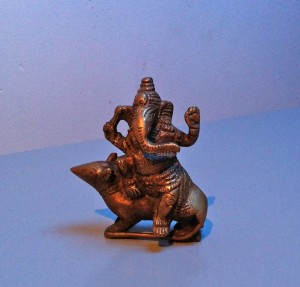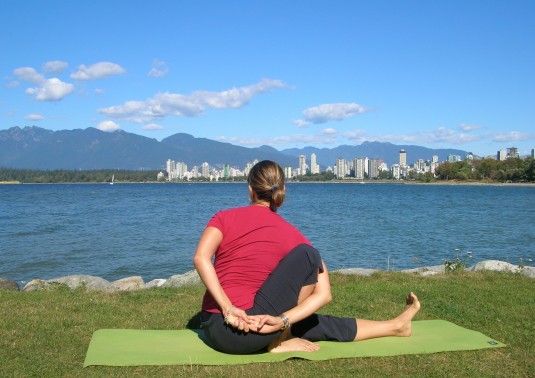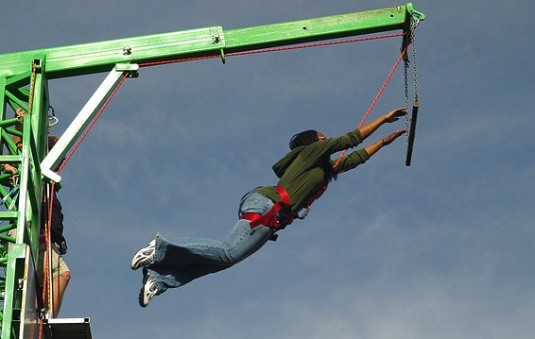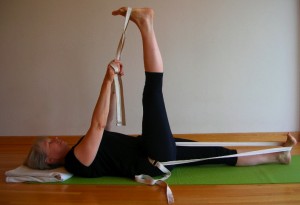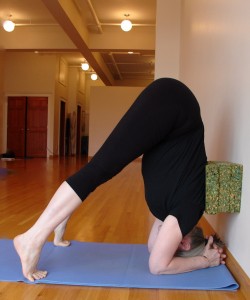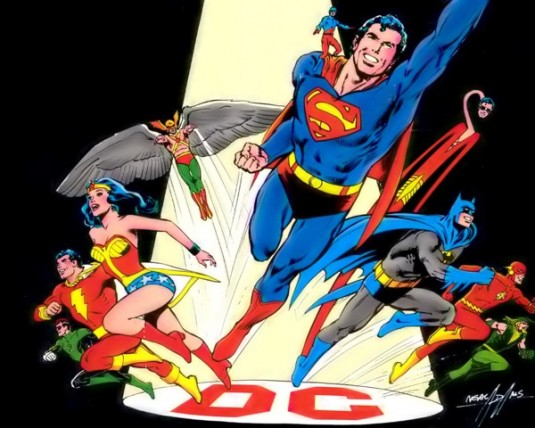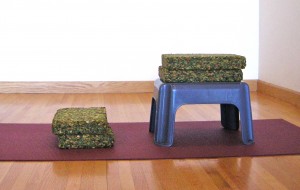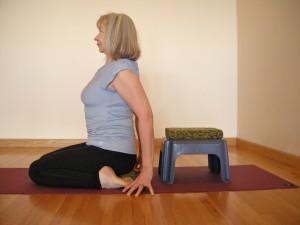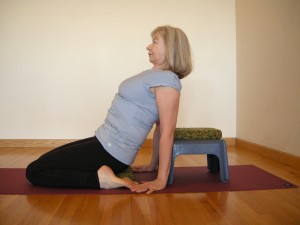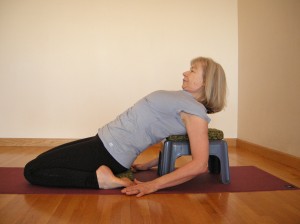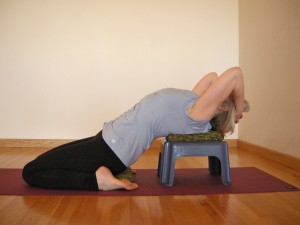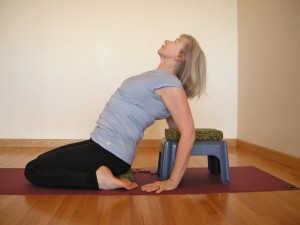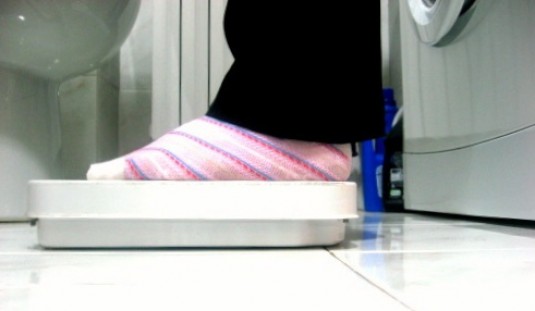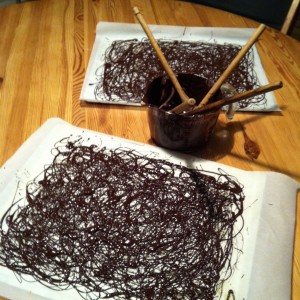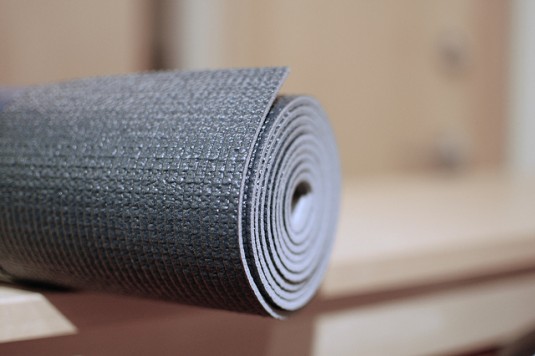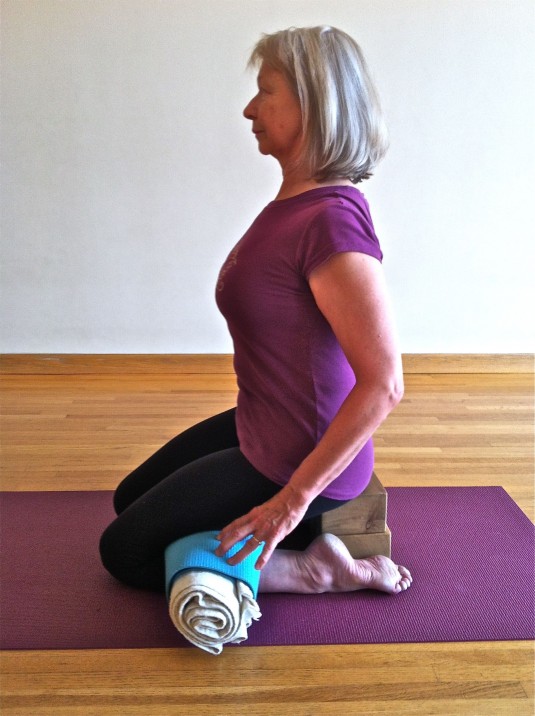
That roll between my calves and thighs is a close to magical prop for foot pain, and it helps tight calves and thighs too.
Thirty years ago, when I first started taking yoga classes, Virasana (hero pose) was a 50/50 proposition. Some days it was fine. Sitting up on three chip foam blocks, I could feel a pleasant stretch in the fronts of my feet. My knees didn’t bother me, my front thighs weren’t tight and life was good.
On other days, without warning, one of my arches would cramp.
(I know of two cures for foot cramps. One is to stand up and put weight on the afflicted foot. The other is to sit with the cramp until it goes away. In my experience, the second approach, once you can bear it, gives more long-lasting results.)
After several years of practice, my feet stopped cramping. I took out one chip foam, and there I stayed.
Half lotus became full lotus. Bound angle pose opened and my shins dropped to the floor. My hamstrings lengthened and I no longer needed to sit on a blanket in forward bends.
And yet I still sat on two blocks in Virasana.
At that stage of my practice, I didn’t mind.
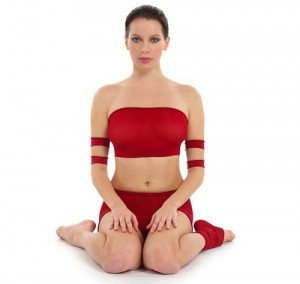 Hero pose is one of the first seated poses taught to beginners. Small children do it quite naturally, even if they do sit with their feet out to the side, like this dubiously dressed model, at an angle that’s hard on the knees.
Hero pose is one of the first seated poses taught to beginners. Small children do it quite naturally, even if they do sit with their feet out to the side, like this dubiously dressed model, at an angle that’s hard on the knees.
I was working on more glamorous poses, such as elbow balance and headstand, and wasn’t interested in something so seemingly basic.
Besides, besides, when I took out a block and tried to sit lower, I was instantly transported into the land of misshapen ankles that bowed outward, rapidly turned white, and were exceedingly uncomfortable.
It might have stayed that way if I hadn’t started having foot problems: a sprained left toe, and plantar fasciitis, also on the left. In a disturbing and related development, my left leg had suddenly begun to tighten. Leg stretches felt wildly different on the left and the right sides.
Sitting in Virasana with a thick roll between my calves and thighs gave me relief, especially when I also stretched my feet on wood bricks.
The extra pressure into my calves and hamstrings works like a deep massage, and has softened my left leg again. For the tight of hamstring, using a roll in Virasana is a useful way to loosen up.
I still begin most practices in hero pose with a roll, and use the position to centre and quiet myself. The unexpected bonus: slowly hero pose is beginning to change. I understand it better than when I was perched up on blocks. I can see how my groins need to move deeper while my femur heads pull towards each other.
This Five-Minute Yoga Challenge is an excellent way to increase your leg flexibility, reduce any pain in your feet, calves and heels, and remove some causes of knee pain.
If you have an existing knee injury, avoid this pose until your Iyengar yoga teacher, or your physiotherapist, has cleared you to work with it.
Here’s how to set it up:
 Take a blanket in shoulder stand shape, and place the long-end fold at the end of a yoga mat. Roll up the mat and the blanket to make a thick, not-too-firm roll.
Take a blanket in shoulder stand shape, and place the long-end fold at the end of a yoga mat. Roll up the mat and the blanket to make a thick, not-too-firm roll.
Have a collection of bricks, foam bricks or blankets close at hand.
Set your timer for five minutes. You can stay for 10 if you like.
Position your legs for hero pose, with your thighs parallel.
To bring the roll as deeply as possible behind your knees, lean forward and bring your head to the floor.
Pull the roll into place. As you begin to sit back, take your hands to your hamstrings and draw them up toward your buttocks.
Then slowly bring your weight onto the roll.
Your buttocks will be suspended in the air. If you’re in some discomfort, but basically okay – you can breathe easily through your nose, and your eyes aren’t popping out of your head – then let your buttocks hang for a moment to see if you descend further. When you’ve reached your limit, take whatever props you need for a comfortable seated position.
The height of support determines the intensity of the sensation.
You can try a wood brick on different levels, a pair of them in different combinations, or a wood brick and a blanket.
Make the pose challenging, but doable. You will feel compression in your calves and the backs of your thighs. Stay with it.
Sit tall. Press your fingertips into the roll, and use your arms to help lift your spine.
To come out, lean forward, and remove the roll.
Then remove the other props and carefully test your hero pose. You may find that you can sit a little lower than your usual setup. Don’t push it. If your feel pain in your knees, or your ankles bow out and turn white, you need to sit higher.
Before you leave your mat, stretch out the backs of your knees in seated stick, downward dog, or standing forward bend.
If this was your kind of pose you might also like:
Find your working place in hamstring stretches
Supta Virasana: Sometimes Even Super-Heroes Need to Lie Down
Television Yoga for Tight Front Thighs


